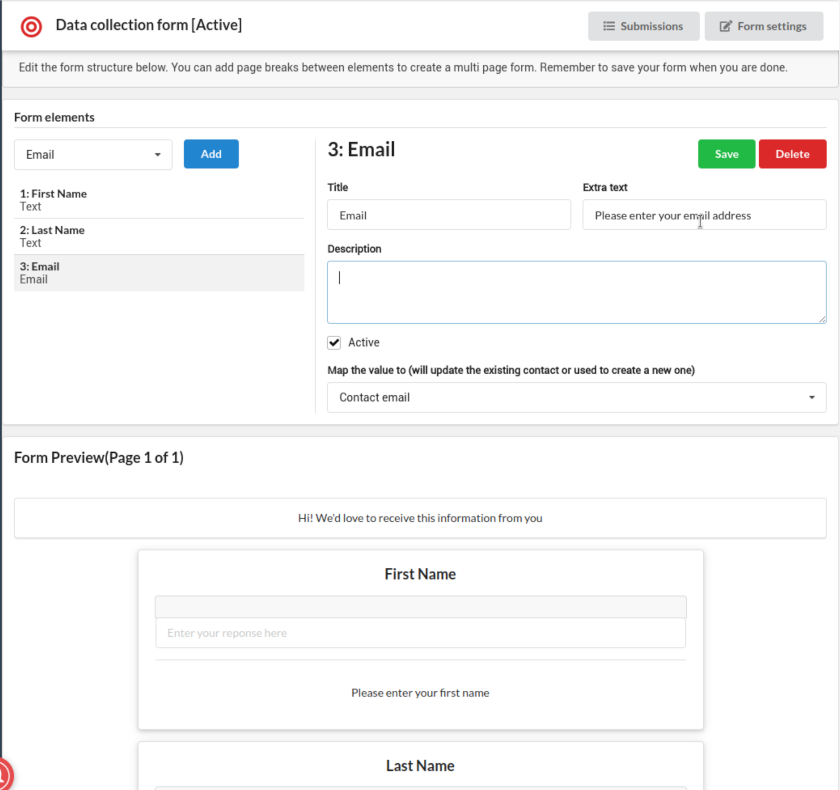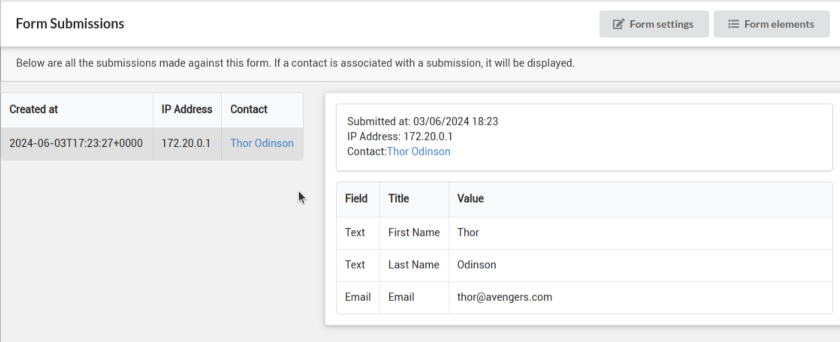Cogmento CRM
Documentation
Data collection Forms
Cogmento CRM allows you to construct elaborate forms that can be placed online, embedded into your website, or sent directly to contacts. These forms can be designed to either create new contact records or update existing ones upon submission.
The forms can then be sent directly to contacts, embedded in your website or given to anyone to complete in any way you find works best.
Creating forms
To create a new form, visit the Forms section from the left hand side navigation menu, and click the Add button. First you are requested to specify the name of the form, and optionally some welcome and completion text.
You can also determine if the form is public or internal. Public forms are available publically to fill out, while internal ones can be used as Call Scripts within call records.

Once created, you can then add all the form fields that fit the data you wish to collect. In the example below we want to collect the first and last name of a person as well as their email address. Note that each of those fields is mapped to the relevant contact field (as in the example below, the email field is mapped to the Contact email). A preview will be shown below, to reflect how the form will look like.

Once completed the form can be used in different ways:

This form can be embedded on your website inside an iframe, given as is to anyone, or sent directly to specific contacts.

When sent to a contact (and having fields mapped to the contact fields), the submission will update the contact record. This allows you, for example, to request a contact’s latest information or answer some specific questions related to your business and service.
If a form is filled out without a contact context, a new contact will be created.
You can see all the data submissions related to a form, with links to the generated contacts, if applicable:

Forms can be a very powerful tool to collect and update data from your customers and contact base.
Note about field mapping
When creating forms you can map fields across to their contact or company counterparts. Some fields are complete, like when adding an Address field, you can map it to the contact address and it would contain a full field set for an address (street, city, etc.). You can also use partial address components like City, State or Country and map those individually to address fields.